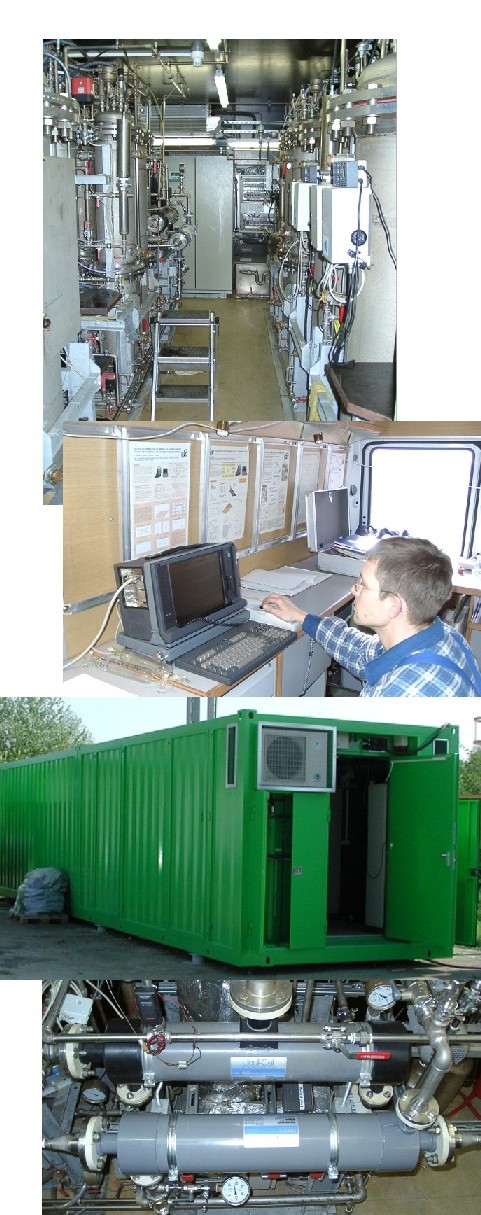Reductive Methods
At the beginning of the 1990s, a method developed by Gillham & co-workers (1994) at the University of Waterloo in Canada caused worldwide interest. In this passive in situ process, granular metallic iron is introduced into the contaminated groundwater stream, where it acts as a reducing agent. Iron is environmentally acceptable and utilized in various forms, where nanoscale zero-valent iron is the most widely known material for in-situ generation of permeable barriers. The Department of Environmental Technology of the UFZ developed
Carbo-Iron
® which is a composite with nano-iron structures as reducing component but embedded in activated carbon in-situ generation of permeable sorption-reaction barriers became possible.
Unfortunately, all iron-based methods fail for reduction of contaminants with aromatic halogen-carbon bonds, such as chlorinated benzenes. Here we have to switch to the catalytic hydrodehalogenation as treatment method, because catalysts such as
palladium
allow high reaction rates and are able to rapidly destroy the aromatic contaminants as well. However, the extremely high reactivity of palladium catalysts is always accompanied by a high sensitivity against catalyst poisons often leading to short catalyst life-times under environmental conditions.
- Increase in catalyst life-time by hydrophobic protection against water constituents which also prevents Pd from leaching.
- Enrichment of hydrophobic pollutants by adsorption at the catalyst carrier and chemical conversion of the contaminats in the sorbed state.
- Extremely active nanocatalysts are used which can be easily extracted from the treated water by magnetoseparation. Also their combination with membranes or other sorption-active materials is under study.
- Since palladium is very sensitive to deactivation, catalyst systems with copper as active metal are considered as cheaper and more robust alternative for dehalogenation processes. We study not only longevity, but also the possible application areas, pollutant target spectrum and selectivities.
- For difficult to treat pollutant classes, such as poly- and perflourinated alkyl substances, also Advanced Reduction Processes (ARPs) employing solvated electrons are under study.
- Another way to improved catalytic conditions is the transfer of the highly diluted volatile contaminants from the "unfavourable" water phase into the "favourable" gas phase. Most organic contaminants are enriched by stripping into the gas phase by several orders of magnitude (mass-stream basis) which makes the treatment gas streams at higher temperature (>100°C) economically feasible.

